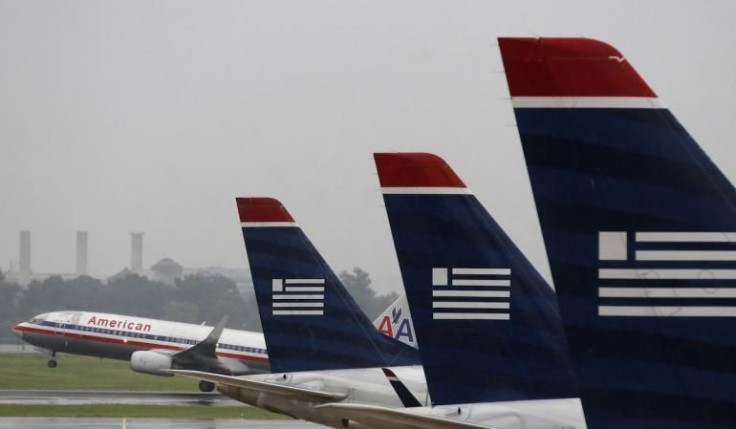10 Biggest Travel News Stories Of 2013 (And Their Impact)
Triumph Puts Carnival In Deep Doo-Doo

The Story: Carnival Triumph captivated a global audience in February as it drifted through the Gulf of Mexico for five days carrying more than 4,000 passengers, many of whom complained of everything from food shortages to scorching tent villages and human excrement running down the ship’s corridors. Carnival said these accounts were exaggerated, but its troubles didn’t stop there. Three other Carnival ships, Dream, Legend and Elation, all reported technical issues within two months of the Triumph fiasco, calling into question cruise ship safety, oversight and accountability just one year after the Costa Concordia tragedy, which also took place on a Carnival Corp. ship.
The Impact: The people left wading through human excrement or baking under an unrelenting tropical sun were supposed to be having the times of their lives on a dream vacation. It’s that dichotomy that turned these everyday accidents into perfect tragedies -- and the company responsible into the perfect villain. Since then, Carnival has shuffled around its upper management, undertaken a fleet-wide review, imposed new safety regulations and paid back the Coast Guard for tax money used to tow the Triumph to safety. Critics argue that while these changes are positive, they only scratch the surface of the bigger problem: a need for true oversight of the largely self-regulated cruise industry.
American Airlines, US Airways Form World's Largest Carrier

The Story: It was a long time coming -- and for a moment it seemed like it might not happen -- but come late November it was official: American Airlines and US Airways would combine into one megacarrier. A settlement with the U.S. Justice Department over an antitrust lawsuit earlier that month cleared the way for AMR Corp., parent company of American Airlines, and US Airways Group Inc. to proceed with their $17 billion merger. The settlement resolved the Justice Department’s concerns over competition and blessed the creation of the world’s largest airline with more than 6,700 daily flights into 336 destinations in 56 countries.
The Impact: American Airlines and US Airways will both divest slots, gates and related facilities to emerging low-cost airlines to enhance systemwide competition. This was one of the major components of the settlement, as the lawsuit argued that four legacy carriers with a history of “tacit coordination” would control more than 80 percent of the U.S. commercial air travel market. Some analysts say that, despite the divestitures and despite the Justice Department’s talk of “more choices and more competitive airfares,” history points to a different story. The airline industry has seen a rash of mergers in recent years, including United-Continental, Delta-Northwest and Southwest-AirTran. All the while, the price of a domestic roundtrip flight has climbed by more than 15 percent (adjusted for inflation) since 2009, according to figures from the Bureau of Transportation Statistics.
As World Turns To Trains, US Looks To Buses

The Story: As massive train-building schemes take shape across the globe, a different mode of transportation that’s neither flashy nor particularly fast is booming in the U.S.: intercity buses. The bus -- arguably the most banal form of public transportation available in the developed world -- is the fastest-growing mode of U.S. passenger transportation by a long shot. The industry grew by 7.5 percent in 2012, with discount operators like BoltBus and Megabus recording a whopping 31 percent increase in departures, according to a study from DePaul University’s Chaddick Institute for Metropolitan Development. Joseph Schwieterman, director of the Chaddick Institute and lead author of the study, told IBTimes that what’s happening to intercity buses, particularly the budget operators, reminded him of being in the airline industry in the late '80s. “All of these hubs were emerging and there was this empire-building. Now, that’s happening with the bus industry.”
The Impact: Tracking the change that propelled the intercity bus industry out of decades of decline in 2006 is rather simple: Megabus leapt across the Atlantic from Scotland and arrived on U.S. soil. The budget subsidiary of Coach USA -- which is itself owned by British transport company Stagecoach Group -- launched in nine Midwestern cities and galvanized the industry with fares as low as $1 each way, perks like reclining seats, Wi-Fi and electrical outlets, and green-certified buses. The global bus line is now in more than 120 cities in North America alone, and acquired 12 regional bus companies last year, further expanding its portfolio. “I’ve been in the transportation industry for a long time,” Mike Alvich, vice president of marketing for Coach USA, told IBTimes. “But I’ve never seen the American consumer take to the bus like this.”
Sochi Olympics Highlights Fears Of Gay Travelers

The Story: Russian President Vladimir Putin signed draconian antigay legislation into law over the summer that prohibited the dissemination of “propaganda of nontraditional sexual relations.” Within a matter of days, world condemnation reached a fever pitch, with several activist groups and celebrities calling for a boycott of the Sochi Olympics. “Just six months before Russia hosts the 2014 Winter Games, Mr. Putin signed a law allowing police officers to arrest tourists and foreign nationals they suspect of being homosexual, lesbian or ‘pro-gay’ and detain them for up to 14 days,” actor and playwright Harvey Fierstein wrote in a now-viral July 21 op-ed in the New York Times. “Contrary to what the International Olympic Committee says, the law could mean that any Olympic athlete, trainer, reporter, family member or fan who is gay -- suspected of being gay, or just accused of being gay -- can go to jail.”
The Impact: Russian officials have assured all visitors that they won't face discrimination at the Feb. 7-23 Winter Games, while the International Olympic Committee has simultaneously pressed for details on how exactly the nation plans to implement its new laws. The real impact of this story won’t be clear until next year when the world converges on Sochi. Will activists use the Games as a platform to promote change? And if they do, how will Russia respond? No matter what happens at the 2014 Olympics, it’s destined to be a test of the LGBT community’s campaign for fair treatment across the globe.
Digital Revolution Takes Flight

The Story: Tech toy addicts tweeted their joy when the U.S. Federal Aviation Administration announced in October that it would allow gate-to-gate use of portable electronic devices on airlines. The agency based its decision on the results of an exhaustive yearlong review by the 28-member PED Aviation Rulemaking Committee, composed of pilots, flight attendants, airline executives, mechanics, engineers and electronics makers. Within days of announcing the change, most major U.S. carriers had updated their policies to allow tablets at takeoff.
The Impact: FAA’s decision appears to have opened the floodgates to a wide-sweeping overhaul of how we travel in the digital age. But critics say the latest proposal this past month, in-flight mobile broadband, may be taking the trend one step too far. This change comes from the Federal Communications Commission, not the FAA, and is seen as an attempt to offer airline passengers the same ability to work and communicate that they have on land-based options like trains and buses, both of which have shown larger growth in recent years than the U.S. aviation industry. Whether airlines or passengers want phones fully operational on planes remains up for debate. Henry H. Harteveldt, travel industry analyst at Hudson Crossing LLC, told IBTimes there is “no commercial demand, no demand from passengers and no demand from airlines.”
Travel Guidebooks Struggle To Stay Relevant

The Story: Despite the shift from print to digital; despite the Wikis, Yelps and TripAdvisors; and, perhaps most of all, despite an unhappy divorce that left the once-revered guidebook empire void of content, Arthur Frommer triumphantly plucked his fading brand out of the Google trash bin in July and announced its return (in print no less). The shakeup at Frommer’s came in the same year BBC Worldwide sold Lonely Planet to Nashville-based NC2 Media. The young company promises to “marry the world’s greatest travel information and guidebook company with the limitless potential of 21st century digital technology.”
The Impact: Travel guidebooks were once thought of as impervious to the change from print to digital given that vacationers don’t always have access to mobile data when abroad -- particularly in less-developed nations. But publishers of these iconic tomes are beginning to feel the pinch. U.S. retailers sold just 7.97 million books in the adult nonfiction/travel category last year, a drop of 19 percent from 2011 and 27 percent from 2010, according to Nielsen Bookscan. “Use of printed travel guides have been on the decline for some time,” Douglas Quinby, principal analyst at PhoCusWright Inc., told IBTimes. “There is still a market -- fewer than one in five travelers use them today during the shopping phase, and even less in destination selection -- but it's only getting smaller.” Some of the losses are, presumably, mitigated by an increase in publishers’ digital downloads. But the wealth of alternative content on the Web -- from TripAdvisor to Wikivoyage and amateur blogs -- is certainly troubling for the industry, Quinby said.
Chinese Tourists ‘Get Civilized’

The Story: Mainland China topped the U.S. and Germany to become the world’s largest source market for outbound tourism by expenditure last year, and the Chinese are expected to spend a whopping $117.6 billion in 2013. But the more that Chinese cross the border, the more that officials issue advice to citizens on the practices of “civilized tourism” to encourage travelers to become ambassadors while abroad. Tips Chinese Vice Premier Wang Yang told citizens in May include don’t spit on the ground, don’t cut in line and don’t talk too loud or travel in huge groups. By October, China’s image-conscious authorities had a new weapon in their yearlong etiquette crusade: the 64-page “Guidebook for Civilized Travel Abroad,” which dictates the dos and don’ts of international travel with cartoon illustrations.
The Impact: While nations roll out aggressive marketing schemes to lure the Chinese and the government calls on them to improve their etiquette, a rash of stories in domestic media tell another story of everyday Chinese tourists being treated like second-class citizens abroad. In March, a blogger posted his dissatisfaction with a resort in the Maldives that allegedly denied kettles to Chinese tourists for fear they would cook up instant noodles in their rooms. Hundreds of thousands of Chinese reposted the rant, demanding that their fellow citizens boycott the Indian Ocean nation. Such incidents underscored certain perceptions people have about Chinese visitors -- perceptions the government is out to discredit.
US Rekindles Its Love Of National Parks

The Story: After the U.S. Congress failed to pass a continuing resolution to fund the government by Oct. 1, Americans endured a 16-day partial shutdown that affected one group much more than others: travelers. And it wasn’t just the travelers themselves, but the businesses that depend on them. The Department of the Interior estimated that the closure of the National Park System alone cost local communities a minimum of $76 million per day in total visitor spending. Under the government shutdown, more than 21,000 members of the National Park Service staff were furloughed without pay, and all national parks and Smithsonian museums closed indefinitely.
The Impact: If anything good came out of the government shutdown, it was this: Americans finally realized the importance of their often-neglected National Park Service. The NPS chugged along withered and worn under the chopping block that was sequestration, only to come to a complete halt under a government shutdown that deprived the system of the basic funds necessary to keep gates open at 401 national parks, monuments and other sites nationwide. But on the far side of the tunnel, the park service -- and indeed the Interior Department as a whole -- has emerged with a new energy and a mission to boot. As U.S. Secretary of the Interior Sally Jewell noted in her first major address after the shutdown: “You don’t know what you’ve got ‘till it’s gone.”
Travel Marketers Bank On Dream Jobs

The Story: Ever dreamt of leaving your boring desk job to travel the world? Do you lack the funds to do so? Not to worry, dream jobs are sprouting up across the globe, offering anyone the chance to live out their wildest fantasies (and become an Internet celebrity in the process). Want to get paid to test waterslides? SplashWorld has a job for you. Want to travel around the world and get paid $100,000 on top for your troubles? “Vacation matchmaker” website Jauntaroo can help. How about spending every weekend traveling to top European destinations? Lastminute.com has the gig of a lifetime. The current crop of campaigns owe their success to the grandfather of great travel giveaways: Queensland, Australia’s 2009 Best Job in the World. Tourism Australia revived the idea this past year offering six alluring Best Jobs in the World across the continent, generating millions of dollars in free publicity in the process.
The Impact: It’s not just the competition winners who win in these marketing schemes. With little money upfront, travel brands have found that they can gain a massive social media following and free press by offering lucky contestants (with Internet appeal) amazing gigs. Take Tourism Australia, for example. The travel board announced in November that it had reached 5 million fans, making it the most-popular tourism destination page on the planet. With those kinds of figures in mind, one can expect the market for dream jobs to be on the rise in 2014.
Instagram Becomes The New Postcard

The Story: Who could have predicted five years ago that snapping cell phone pictures would go from tacky to trendy? Who could have guessed 16 months ago that grainy photos would become more popular than high-resolution pixs? There’s no denying that in the blink of an eye, Instagram has become the postcard maker of the digital age. It’s the envy-inducing app that every traveler has dreamed about -- the one that allows them to show (in one boxy snapshot or #selfie) where they are and you’re not. With Instagram, travelers have found that they can share their journey as it happens -- or at least as soon as they can find a Wi-Fi connection -- and when the trip is complete, they have their own photo diary compiled with minimal effort and artistic (read: grainy, fuzzy, high contrast) flair.
The Impact: Everyone knows that a photo is worth a thousand words, and like any new form of social media, Instagram is now as popular with consumers as it is with marketers. There are Instagram photo exhibits at hotels, Instagram-themed hotel packages, and tourism board-sponsored Instameets. And if you're worried about the decline of the poor old postcard, fear not: There’s an app that can turn digital pics into real-life postcards and send them off on an old-school journey through the post.
© Copyright IBTimes 2024. All rights reserved.












